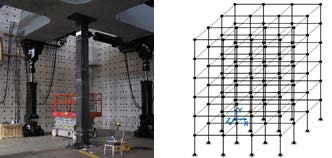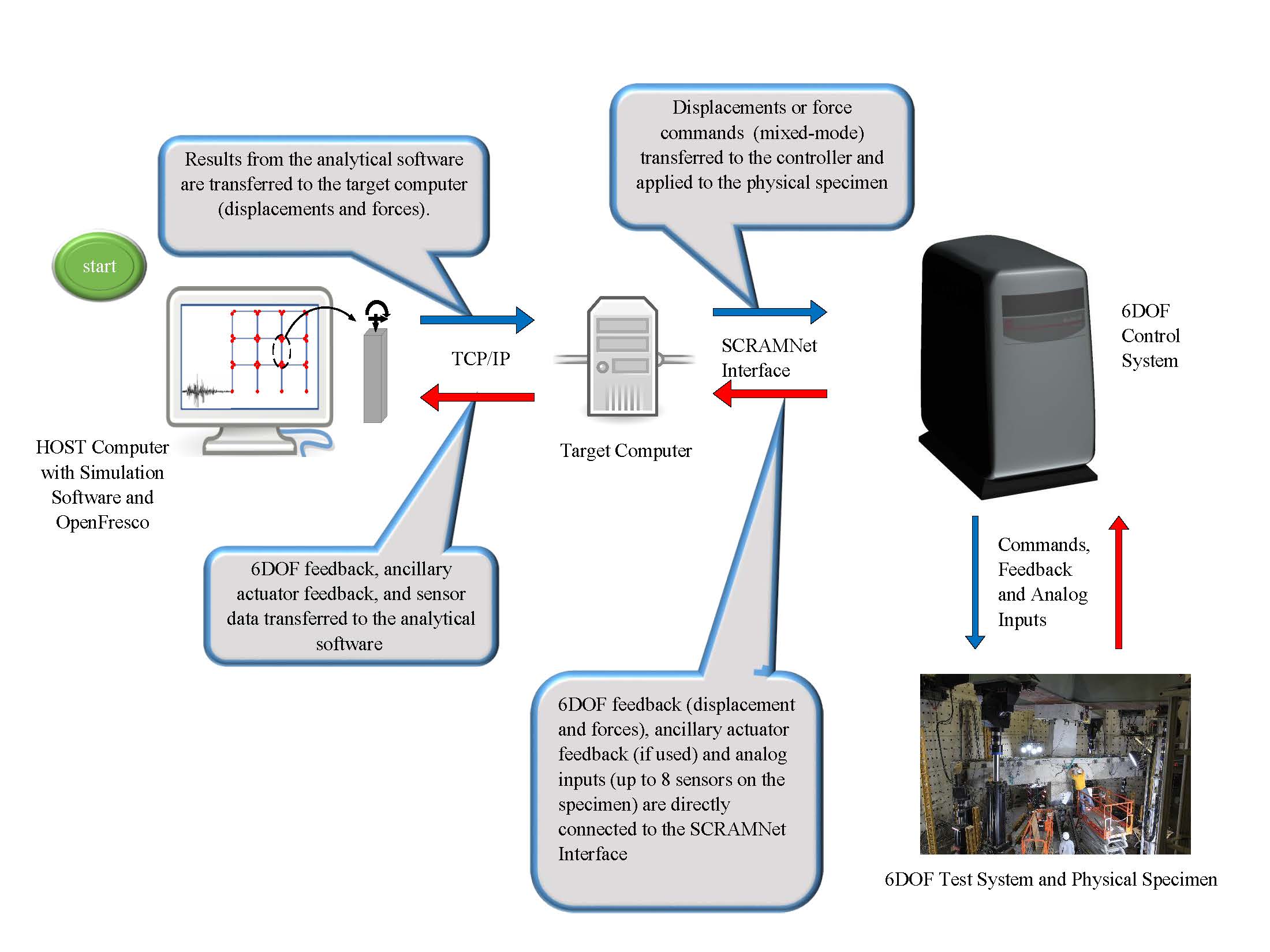The MAST system has been upgraded to enable Quasi-Static Hybrid Simulation (QSHS) using the OpenFresco open-source framework. Hybrid simulation is a combination of physical testing and computer modeling that provides a more efficient way to investigate structural responses to loading. A computer model of a structure is analyzed incrementally in synchrony with the physical test of a specimen that represents a member or sub-assemblage of the computer model.

There are three versions of Hybrid Simulation:
- Quasi-Static Hybrid Simulation (QSHS): A loading event is applied in a sequence of displacement or force increments that are much slower than the actual loading history, thus allowing the detailed study and evaluation of components that contribute stiffness and strength to the structure.
- Real-Time Hybrid Simulation (RTHS): A one-to-one correspondence in time scales for displacement, velocity, or acceleration control is used to investigate rate-dependent phenomena such as damping or inertial effects.
- Fast Hybrid Simulation (FHS): The tests are run much faster than in QSHS, but not close to the rates for RTHS.
OpenFresco can be coupled with various analysis software packages (e.g. OpenSees, Abaqus, or Matlab) for computer representation of the complete structure. A “host” computer runs both the analysis software package and OpenFresco, and is connected to the physical specimen in the MAST payload through a “target computer.” OpenFresco connects directly with the MAST 6DOF control system through a ScramNet interface/shared memory card.
Displacement feedback, force feedback, and external signals from 1) the 6DOF system, 2) up to 4 ancillary actuators, and 3) up to 8 analog inputs, are shared directly with the “target” computer through the ScramNet interface. The analysis software communicates through OpenFresco to send and receive control signals to the “target” computer, provide new targets, and receive feedback from the MAST 6DOF Controller.
